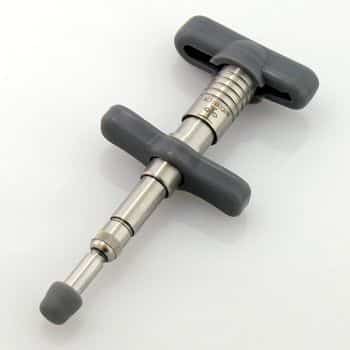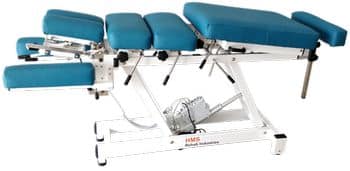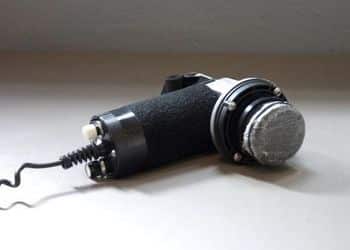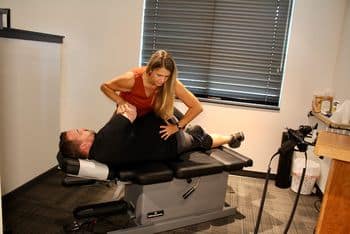
Choosing a chiropractor is an important decision. Learn about some of the different approaches chiropractors use to treat their patients.
When you think of the word chiropractic, what comes to mind? “Neck cracking”? X-rays? Special patient tables with multiple panels? The heart (or should we say backbone) of chiropractic medicine is the adjustment, which the chiropractor performs on a patient, in order to improve motion at a specific joint, help with spine alignment, or increase general flexibility.
But how do chiropractors go about this? There are multiple ways a patient can be adjusted: through traditional methods, instrumental methods, or through a combination of the two, which for our purposes, we’ll call hybrid chiropractic. We’ll go over each method and the different benefits they offer for different groups of patients.

Another benefit of seeing a traditional chiropractor is the simple, hands-on approach. Because the chiropractor is using their hands directly, they can evaluate, diagnose and distinctly feel changes in the patient’s body during the adjustment.
Who can benefit from traditional chiropractic?
Many people can benefit from traditional chiropractic. It’s familiar for most chiropractic patients and can be a starting point for many treatment plans. However, there are some patients with specific conditions that should not receive manual adjustments. For example, patients with a history of stroke, recently in an auto accident, patients who have surgical hardware, or patients with spinal cancer or osteoporosis should not seek traditional chiropractic adjustments.
Chiropractic instrument adjustments are an alternative to traditional chiropractic. Instruments deliver specific adjustments that the doctor determines need to be performed. These tools are designed for particular purposes, and come in a few different forms, including these:

Similar to the activator, the Impac Arthrostim uses a series of tiny movements that occur within a moment’s time frame. A single tap can deliver up to 40 pounds of force with little-to-no discomfort to the patient. A typical Arthrostim treatment uses 10-12 taps. It differs from the activator since it’s electric rather than spring-loaded, offering even greater control and gentleness during a patient’s treatment.

This spring-loaded, hand-held device helps the doctor adjust specific regions of the body through high speed and controlled force. It sounds intense, but it’s small and relatively simple. The doctor points the activator at the area, and the activator delivers a light, controlled, and fast thrust to the patient. Because of the speed of the activator, the muscles do not have time to tighten and resist, and the area is adjusted with very little force felt by the patient.

Another tool that uses tiny movements is the Drop technique. It employs a unique table that subtly drops, bit by bit, while the chiropractor applies pressure. Multiple drops in table height are sometimes needed for this method’s efficacy.

This option works through a combination of vibration and percussion impulses that are delivered deeply into muscles, which can help with muscle, tendon, and ligament issues. It can help patients avoid deep pressure (particularly useful for fibromyalgia sufferers) and is also used with professional sports teams to advance healing, reduce pain reduction, and prep for games.
Who can benefit from instrument chiropractic?
Almost everyone. Instrument adjusting is especially helpful for those who have conditions that restrict them from traditional adjustments, like bone conditions or stroke history, for example. Those who are in severe pain due to acute injury (from a recent car accident, for example) should also consider instrument chiropractic. Other patients may simply prefer the gentle and controlled adjustments of a chiropractic instrument.
And now for our favorite:
It’s exactly what it sounds like–it’s a combo of both instrument and traditional chiropractic adjustments. Patients may be used to traditional adjustments and prefer this method. Patients may also be hesitant to undergo traditional chiropractic treatment and opt for a gentler instrument adjustment. The decision can be based on need or preference.
Who can benefit from seeing a hybrid chiropractor?
Everyone. Everyone wins with hybrid chiropractic. Because there’s no one good way for every single patient, we let you “choose-your-own-adventure” with your treatment plan (within reason) and with plenty of guidance from us, of course. We won’t ever have you do something you’re uncomfortable with, or anything that would worsen your condition. After all, we’re the doctor.


The Chiropractors in our Redmond clinic prefer to find a treatment plan that will have the patient’s best interests at heart. Sometimes that means traditional methods. Sometimes that means only instrument-based chiropractic. Whatever the combination may be, we’ll walk you through each needed step.
We know that a big part of chiropractic is comfort–we wouldn’t see you if you felt uncomfortable! So we get to know your likes, dislikes (in terms of adjustment preferences), medical history, and other information that will impact the details of your treatment plan. Some patients might have a fully traditional chiropractic treatment plan, while others may be slated to have a fully instrumental chiropractic plan, but most of our patients will be a combination of the two. With so many tools in our toolbox (our hands included), we can work to alleviate your condition with all hands–and tools–on deck.
Conclusion
There are many things to consider as you seek out chiropractic care, whether traditional, instrument-based, or a hybrid, as at Element Chiropractic. The most important tool at a chiropractor’s disposal is their ability to fully understand and diagnose the patient’s condition and find the best possible course of action. In considering the patient’s preferences, comfort, long-term health goals, and lifestyle, Dr. McHattie at Element Chiropractic can create a customized treatment plan that will help get you back in your element.
If you are ready to spend some time on yourself, work on a plan to keep moving, and to do what you love without out of pain. We are here for you.
Copyright @2025 Element Chiropractic — 875 SW Rimrock Way Suite 103, Redmond, OR 97756